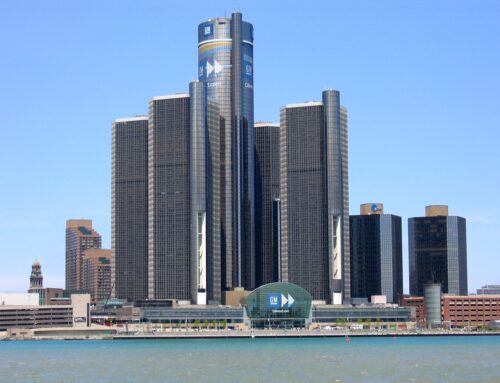Description and Details
California faces heavy pollution from several factors including unexpected high-rate forest fires, heavy car pollution creating a “bowl effect” trapping the polluted air, and large-scale agricultural and oil sectors. With many projects ongoing to combat these issues, the California High-Speed Railway (CAHSR) could help reduce vehicle emissions, a leading pollution source in the state.
The project history could be dated back to 1998 when the CA legislature and Governor Pete Wilson established the “California High-Speed Rail Authority” (CHSRA). In 2000, the construction plan was proposed, and CHSRA started to seek peer review. Proposition 1A for CAHSR got approved in 2008 and received $1 billion in funding. President Obama also set a national plan of 13,840 km of high-speed railway tracks
However, construction didn’t go smoothly. While CAHSR initially gained optimism, there was increasing opposition related to the potential damage to wildlife and disruptions to local communities. Farmers were afraid that the railway would reduce the acreage of productive agricultural land, separate irrigation routes, and destroy permanent crops. Certain industries, including auto and airplane companies, saw the railway as a threat and a chance to lose profits.
Compared to China, leading in the high-speed railway network, some voters and politicians in the USA want to build high-speed railways quickly and efficiently. Unlike China, which is ruled by a highly centralized government, the USA has a slightly more decentralized system which can result in more opposition to the railway and ultimately prevent its construction. There are competing jurisdictions along the railway that compete over resources and personal private property rights. These obstacles resulted in CAHSR having to negotiate with every local government the railway would pass through.
Another issue for the CAHSR was the project cost. From hiring consultants and contractors to lawsuits from residents, there has been a strain on the railway’s budget and funding. CAHSR expected the federal government to cover some of the construction costs, around tens of billions of dollars, but the federal government only invested $3 billion. This may be caused by Democrats being generally in support of the railway, and Republicans against it, and the funding is dependent on which side the White House has the majority. Currently, the project has been resumed under the Biden administration after funding was withdrawn under the Trump administration.
Now, the railway construction continues between Merced and Bakersfield, but it’s not anticipated to finish in the near future. The fate of CAHSR is uncertain and largely dependent on politics and funding.
Emission comparison with different ways of transportation:
In GHG (Greenhouse gas emission), a 5‑passenger car is equivalent to CAHSR with approximately 1,200 passengers.

FIGURE End-use energy consumption and GHG emission passenger equivalencies. (Chester, M. and Horvath, A. (2010). Life-cycle assessment of high-speed rail: the case of California. Environmental Research Letters, 5(1), p.014003. doi:https://doi.org/10.1088/1748–9326/5/1/014003.)
CEE subjects: Construction Engineering and Management, Transportation Engineering
Comments: An LCA analysis I found in a scholar article is really interesting and it reminds me of the lecture in 265.
Discussion Questions
- Do you think it’s a good idea to build CAHSR? Why or why not?
- What do you think of the relationship between projects and different social factors like governmental structures and opposition from leading companies in an industry?
- Part of the construction of CAHSR relies on public trust. Since one train derailed in Ohio in 2023, how do you think public trust may be affected by this accident? Furthermore, how will it impact public transportation construction, especially California’s High-Speed Railway?
- What considerations should go into constructing high-speed railways in the U.S.? What are factors that are unique to the U.S. that might not have to be considered in other parts of the world like Europe or vice versa? How can we maintain that the country’s transportation network is still serving the people?
References
- Peer reviewed articles
- The local economic impacts of high-speed railways: theories and facts
- Life-cycle assessment of high-speed rail: the case of California
- Making the Most of High-Speed Rail in California: Lessons from France and Germany
- High-Speed Rail Project Development Processes in the United States and China
- Benchmarking Socio-Economic Impacts of High-Speed Rail Networks Using K‑Nearest Neighbour and Pearson’s Correlation Coefficient Techniques through Computational Model-Based Analysis
- Popular media/news references
- Will California ever get its high-speed rail?
- Train to nowhere: can California’s high-speed rail project ever get back on track?
- Why The US Has No High-Speed Rail
- This high-speed rail project is a warning for the US
- How Train Disasters Changed The Way We Build High Speed Trains| Built From Disaster | Spark
- California High-speed Rail Authority
- How California’s Bullet Train Went Off the Rails
- Why the California Bullet Train Project Failed: 7 “Worst Practices”




Leave A Comment